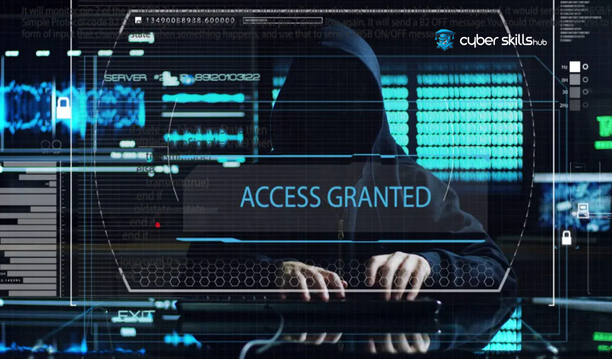Currently Empty: $0.00

Just as once upon a time, even the smallest cracks in a castle gate could lead to enemy troops, vulnerabilities in websites invite cyberattacks.
Like an experienced knight, white hat hackers are an important part of the line of defense against enemy threats in the virtual world.
These armored guards protecting virtual borders are critical to web security; through detailed analysis and inspection, they protect organizations’ most valuable assets.
What is a White Hat Hacker?
White hat hackers are individuals who identify security vulnerabilities of systems by adhering to ethical principles in the world of cyber security and help to eliminate such vulnerabilities. White hat hackers, who strengthen the cyber defense of businesses and institutions by acting within legal frameworks with their protection and improvement-oriented approach, also play critical roles in raising awareness about information security. Professionals in this field work with certain ethical standards and administrative permissions, and are referred to as “bona fide hackers” within the hacker community.
Ethical Hacker Identity
Ethical hackers are experts in cybersecurity who act within legitimate and moral boundaries. They conduct vulnerability research to improve the security of systems.
White hat hackers are considered protectors in the cyber world and strengthen defense mechanisms.
Being an ethical hacker requires combining in-depth technical knowledge with principles of ethical behavior. They conduct penetration tests and security audits and share the vulnerabilities they find with the relevant organizations.
Ethical hackers, as cyber security experts, play a vital role in countering cyber attacks. They detect threats in advance, prevent potential cyberattacks and develop defense strategies against threats.
White Hat Role and Responsibilities
White hat hackers are cybersecurity advocates.
Acting within ethical boundaries, these experts test and strengthen the security of systems. They are responsible for identifying unique vulnerabilities, proving their reliability and efficiency, reporting findings and recommending improvements. They also play an active role in designing and implementing effective defense mechanisms.
White hat hackers are closed to unauthorized access.
People who specialize in this field are seen as respected professionals in the cybersecurity industry. What sets them apart is their commitment to adhering to a strict code of ethics, not accessing data they are not authorized to access, and using the information they obtain responsibly.
White hat roles strengthen the information security community.
Their responsibilities include critical tasks such as security audits, risk assessments, penetration testing and the preparation of emergency response plans. These roles play an important role in making businesses and organizations more resilient to cyber threats. As of 2024, white hat hackers have become even more important and are at the forefront of developing new strategies and technologies to counter ever-evolving cyber threats. For more information about the roles and importance of white hat hackers, please see our article titled’ What is Cyber Security Expertise?‘

Why is Web Security Important?
Data breaches and cyber-attacks have increased in recent years and threaten the security of personal and corporate data. Web security is therefore of uninterrupted importance. Unfortunately, the risks encountered in these areas are increasing exponentially as well as the opportunities brought by developing technology and the internet. Web security is a fundamental requirement for organizations operating in a wide range of sectors, from critical infrastructures to the financial sector, from e-health services to educational platforms.
E-commerce sites in particular are at high risk because they handle users’ financial data and therefore need special security. Cybercriminals can target poorly protected web applications, causing huge financial losses and damage to brand reputation. Advanced protection mechanisms can prevent such damage by proactively identifying potential threats.
Protecting the digital assets of individuals and organizations is one of the top priorities of cyber security professionals. The diversity and complexity of the cyber threats we face makes web security awareness and the measures to be taken more important than ever.
Meaning of Cyber Threats
Cyber threats are the dark side of the digital world.
In our digitalized world, cyber threats are becoming increasingly diverse and complex. From personal data to sensitive government information, cyber-attacks can cause a wide spectrum of damage and lead to the collapse of vital systems. In particular, some forms of attack are becoming increasingly difficult to recognize and neutralize.
Protection from these threats is of paramount importance.
Cyber security experts strive to prevent attacks through methods such as threat hunting. Proactive defense strategies and constantly updated security solutions are critical to detect and neutralize threats at an early stage. For this reason, the need for specialized experts is constantly increasing.
Recognizing threats is the first step to managing them.
Education and awareness programs play a vital role in developing the ability to recognize threats and take appropriate measures. Students seeking a specialization in cybersecurity must have in-depth knowledge of the nature and spread of threats and effective defense techniques against them. By 2024, the cybersecurity industry has further intensified its training to produce qualified specialists to meet these requirements.
Cost of Security Breaches
Cyber security breaches create serious costs for companies in terms of both financial and reputational damages.
- Direct Costs: Emergency response efforts and security improvements necessary to resolve the problem after a breach.
- Legal Obligations: Factors such as legal consequences of violations, penalties and the obligation to comply with regulations.
- Reputation Loss: Long-term loss of revenue as a result of damage to customer trust and a decline in brand value.
- Operational Disruptions: Disruptions in business processes due to the attack and the resulting loss of productivity.
- Opportunity Costs: Withdrawal of investments or missed new business opportunities due to a security breach.
Failure to take necessary measures after a security breach increases the risk of repeated attacks and creates additional costs.
A comprehensive security policy can largely avoid such costs and build organizational resilience. If you want to explore ways to reduce the costs of cybersecurity breaches for small businesses, check out our article ‘Cybersecurity for Small Businesses‘.
White Hat Tactics
White hat tactics aim to test and improve the security levels of systems within legal frameworks and ethical principles. This approach strengthens defense mechanisms against malicious hackers, while enabling ethical hackers to identify vulnerabilities in systems and close them securely. This process also helps organizations measure the effectiveness of their security controls and continuously improve their security posture.
White hat tactics such as pen testing, penetration testing, security audits and regular security training programs are part of advanced defense strategies. Penetration tests, for example, simulate real-world scenarios to analyze how robust an organization’s network structure is. In addition, security training programs make employees aware of cyber threats and help prevent potential human error. As a whole, white hat tactics are a cornerstone of the cybersecurity ecosystem with their preventive and reactive features.
Importance of Penetration Tests
Penetration tests are vital to proactively detect and remediate vulnerabilities.
- Real Scenario Simulations: Simulates real-world cyber attack scenarios.
- Vulnerability Detection: Identifies security vulnerabilities in systems.
- Risk Assessment: Assesses and prioritizes potential risks.
- Reporting of Security Vulnerabilities: Provides detailed reports for security vulnerabilities found.
- Recommend Remediation Strategies: Suggests strategies on how vulnerabilities can be remediated.
- Regularity and Continuity: Continuously test and update security levels.
Through these tests, the effectiveness of cyber security policies and procedures can be assessed.
This process helps protect organizations from reputational and financial losses by preventing security breaches and data leaks.

Finding Security Vulnerabilities
Vulnerabilities refer to points where systems are vulnerable. These vulnerabilities can be exploited by malicious actors, leading to data breaches and system damage. The task of white hat hackers is to identify such vulnerabilities through ethical and legal means.
Various tools and techniques are used to find vulnerabilities in systems. These include vulnerability scanning software, code review applications and penetration testing (pentesting) methodologies. Each focuses on different layers of systems, conducting a wide range of security audits, from wireless networks to the application layer. At this stage, it is critical that findings are analyzed and reported correctly, as well as eliminating potential false positives.
In this process, the size and impact of threats caused by vulnerabilities are assessed. Criticality levels are determined and organizations are guided to prioritize. In this way, cybersecurity professionals can focus on the areas of greatest risk and determine an efficient security strategy.
Finally, detailed remediation recommendations should be provided to address the vulnerabilities found. Remediation action plans developed by experts aim to close vulnerabilities effectively and prevent their recurrence. To achieve this goal, continuous monitoring and updating activities are an integral part of the cyber security discipline, creating a strong line of defense against ever-evolving cyber threats.
Steps to Improve Security
The steps to improve web security should be centered around a clear strategy. First, conduct a risk assessment and identify the threats your system faces. Next, comprehensive scans should be performed for vulnerabilities in the system and vulnerabilities found should be rated. In this process, it is also important to reduce the attack surface, which means shutting down unnecessary services and applications. Raising user awareness of threats through training and awareness programs helps to minimize the risks that may arise from the human factor. Keeping security policies and techniques up to date by constantly learning about current threats and attack methods provides a proactive defense. Finally, incident response plans and continuous monitoring systems should aim to mitigate the impact of a security breach. All of these steps are the cornerstones of a holistic security approach and require a continuous improvement process.
Safety Trainings and Awareness
One of the cornerstones of cyber security is security training for users. These trainings increase awareness, especially against attacks based on human factors such as social engineering. Systematic and regular trainings ensure that the security culture spreads throughout the organization.
Training programs should provide information on technical topics such as firewalls and encryption techniques. At the same time, it is critical to raise user awareness with current threat scenarios.
Subsequently, continuous employee participation in security training should be encouraged, aiming to ensure that each individual has a broad knowledge of security. However, hands-on training (such as cyber drills and simulations) contributes to the retention of topics.
For example, training on strategies for recognizing and responding to phishing emails can minimize risks in day to day operations. Employees need to understand such dangers and act accordingly.
Security awareness should also include training on personal data protection and internal information sharing policies. Ensuring that personal data does not fall into the wrong hands is vital to protecting information security.
As a result, security trainings and awareness programs, when conducted regularly, significantly increase the level of cyber security. Increasing information security awareness at the organizational level strengthens the protection shield against cyber-attacks.
For more information on how to conduct cybersecurity training and its impact in the workplace, see’Cybersecurity Training:Become an Industry Expert‘ for more information.
Continuous Safety Audit
One of the most important steps in ensuring web security is continuous security audit practices. Continuous auditing has a key role in mitigating cyber security risks and taking proactive measures by identifying security gaps and vulnerabilities.
We must consider the dynamic nature of the attack surface and adjust the frequency and scope of inspections accordingly. The diversity and continuous evolution of attack vectors necessitates the flexibility of inspections.
Audit processes should also include possible attack scenarios and tactics of real threat actors. Penetration tests and red team operations contribute greatly in this regard.
Integration of up to date threat intelligence is an important element that increases the effectiveness of audits. In this way, we can be proactive in ensuring system security by being informed about the latest attack trends and vulnerabilities.
Regular review and improvement of security policies and procedures is also essential. It is through these continuous audits that the internal security posture matures and becomes a complete security culture.
Finally, it is essential to support the success of security audits through continuous training and awareness-raising processes. It is within this continuous development that skilled security professionals can elevate the defense capacity of organizations.
Frequently Asked Questions about White Hat
What is a white hat hacker?
White hat hackers are experts who identify and fix cyber security vulnerabilities based on ethical rules. These individuals strengthen the cyber defenses of organizations by working within legal frameworks.
Why is web security so important?
Web security is critical for protection against cyber attacks. It is a necessary defense mechanism to protect personal and corporate data and to prevent financial losses and reputational damage.
What are the roles and responsibilities of white hat hackers?
White hat hackers identify, test and report security vulnerabilities. They also develop defense strategies and conduct continuous security audits.
Why are penetration tests important?
Penetration tests proactively detect vulnerabilities and provide remediation recommendations. These tests enable organizations to keep their cyber security posture constantly updated.
How to find vulnerabilities?
White hat hackers identify vulnerabilities using a variety of tools and techniques. In this process, methodologies such as vulnerability scanning software and penetration tests play an important role.
What are the key steps to improve security?
Conducting risk assessments, identifying vulnerabilities, raising user awareness through training programs and implementing continuous security audits are the basic steps to improve security.
Why are cyber security trainings important?
Cybersecurity trainings increase users’ ability to recognize threats and take appropriate measures. Regular trainings ensure that the security culture is spread throughout the organization and strengthen protection against cyber-attacks.
How to conduct a continuous safety audit?
Continuous security audits are conducted through methods such as threat intelligence integration and penetration testing. These audits improve organizational security posture by keeping security policies and procedures regularly updated.







